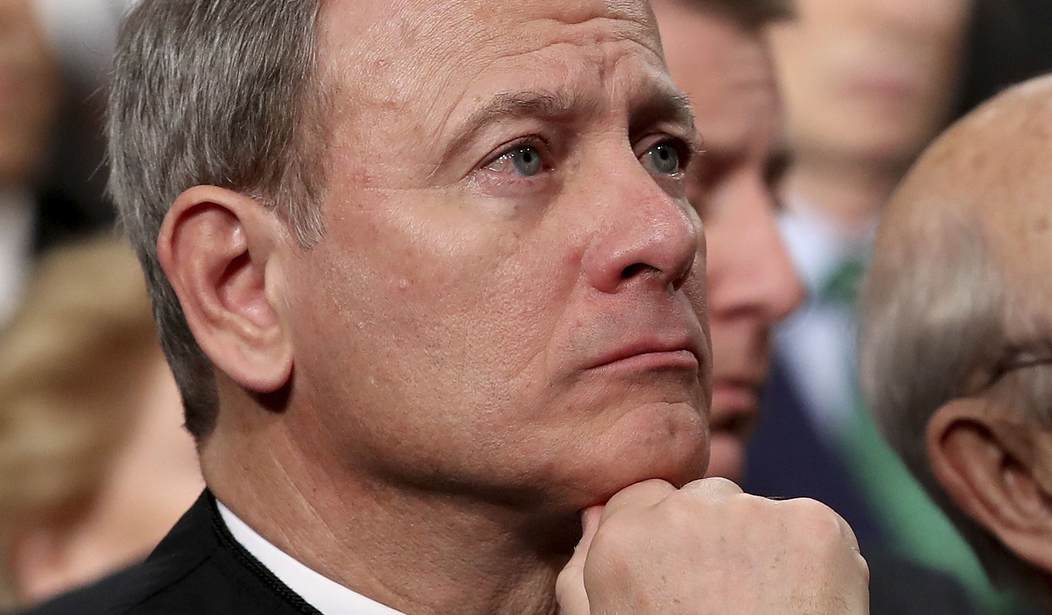Let’s answer this question with another: Did John Roberts ever have power to “steer the direction of the court” in the first place? The Washington Post offers what appears to be a belated cri de coeur over the consequences of moving from having five conservative jurists on the Supreme Court and having six instead. But this is the wrong number to use, at least in one sense:
Almost seven months after Justice Amy Coney Barrett’s swearing-in, the Supreme Court is set to take on a case that could redefine abortion law in the United States. The court announced Monday that it will review a restrictive Mississippi abortion law that would ban almost all abortions after 15 weeks of pregnancy.
Barrett’s confirmation didn’t just give conservatives on the court a 6-3 majority; it also means Chief Justice John G. Roberts Jr. is no longer as likely to be a swing vote on the court — marking a sudden change to the amount of power Roberts has to steer the direction of the court.
When President Donald Trump made his third and final Supreme Court nomination, putting Barrett in the seat previously occupied by Ruth Bader Ginsburg, the court became more conservative than it had been in more than 50 years. With a conservative majority on the court, Republicans hope justices could make a series of landmark decisions on issues their electorate is passionate about. At the top of that list is abortion rights.
Peter Stevenson wants to make the argument that the new 6-3 majority is choosing cases over Roberts’ objections, cases that will take the court in a more political direction. That, however, ignores a technical point about granting cert. Strictly speaking, Roberts doesn’t have any control over which cases the court will hear other than his one vote on requests for cert — and it only takes four justices to hear a case, not five or six. Before Barrett got confirmed, the conservatives had four reliable seats and could have chosen any cases they wanted.
To be fair to Stevenson, however, that’s only a technical hurdle, and it leads to the question of just how much the conservatives strategize on cases. Given that Roberts has apparently decided to cling to the center, perhaps the other four justices wanted to wait until they had five very reliable conservatives on board before tackling abortion, gun rights, and so on. Roberts might not have had any formal power to shape case loads, but his reluctance to tackle hot-button political topics might have discouraged all four justices from taking on these cases. It’s at least an arguable soft power Roberts might have had before Barrett joined the court.
Only that doesn’t quite match up to the reality of this court. For one thing, the justices have been taking abortion cases all along … although usually those brought by appellants seeking to overcome rulings that kept restrictions in place. Secondly, Brett Kavanaugh isn’t exactly turning out to be in the Clarence Thomas mold, although he’s no David Souter either. Kavanaugh appears to be carving out the path that many predicted at the time of his nomination — of a Right-leaning establishmentarian, more given to precise legal analyses than philosophical missions.
Anyway, this is all rather premature, and a bit overblown. The Supreme Court takes cases as they come, and the case in point here — the Mississippi law aimed at restricting abortions on a fetal-pain standard — hasn’t even been argued at the court, let alone adjudicated. Further, the cert grant made clear that the court would only hear a narrow argument, explicitly dispensing with the opportunity to make a much broader ruling by rejecting the scrutiny argument the appellants asked them to hear. If this court truly wanted to go radical, by Stevenson’s argument there would have been five justices willing to address the scrutiny issue. The limiting of this cert cuts against the argument that Barrett’s addition has made this court more radical, at least for now.
Finally, Roberts might be Chief Justice, but that doesn’t mean he controls much of anything on the court in a formal sense. The justices are independent of each other, make their own decisions, and often combine and split in surprising and interesting ways. Roberts’ contributions will continue to shape the court, even if Kavanaugh might end up being the center square at this point.








Join the conversation as a VIP Member